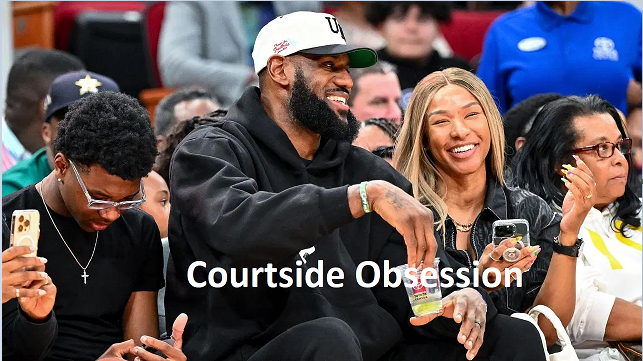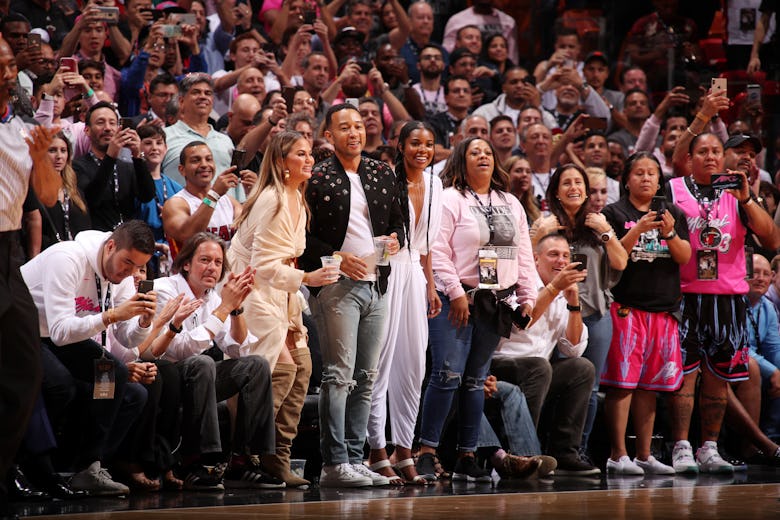Courtside Obsession: Why We Can’t Stop Watching the Game from the Best Seat in the House

The Allure of the Courtside Experience
There’s something magical about sitting Courtside Obsession at a basketball game. It’s not just a seat; it’s a status symbol, a once-in-a-lifetime thrill, and a memory that lingers long after the buzzer sounds. While the rest of the arena watches from a distance, courtside fans feel the game in a way that’s almost too real—sneakers squeaking on the hardwood, sweat flying as players sprint by, and coaches barking instructions close enough for you to catch every word.
For many fans, the fascination isn’t only about basketball. Courtside seats embody exclusivity. They’re expensive, rare, and reserved for those who either made it big or know someone on the inside. That scarcity fuels the obsession. It’s not just about attending a game—it’s about belonging to a world where you’re side by side with athletes, celebrities, and business moguls who command attention in their own right.
At its core, the courtside experience is about proximity. When you’re that close, the game transforms into something intimate. You’re not simply watching—you’re participating in the energy. Every dunk, every foul, every buzzer-beater feels personal. That intimacy is what hooks people, Courtside Obsession making courtside seats one of the most sought-after tickets in the sports world.
Celebrities and the Culture of Courtside Obsession
Courtside obsession didn’t grow in a vacuum. Celebrities have played a massive role in glamorizing it. Think about Jack Nicholson at Lakers games, Drake at Raptors matchups, or Jay-Z and Beyoncé making headlines just by showing up. These stars didn’t just watch the game; they made it an event, turning courtside appearances into a form of social currency.
For celebrities, courtside seats offer visibility. Unlike a private luxury box, the camera frequently pans to the courtside area. That ensures fans at home—and on social media—see who’s there. It’s free publicity, a way to stay culturally relevant, and an opportunity to be associated with the energy of the game. For A-listers, it’s also about cementing their brand Courtside Obsession. If you’re courtside at Madison Square Garden, you’re signaling influence and prestige.
This culture trickles down to everyday fans. People don’t just want courtside seats for the game itself—they want the photos, the bragging rights, the Instagram post that screams “I made it.” Thanks to this celebrity effect, the obsession has become bigger than sports. It’s about lifestyle, luxury, and a chance to rub elbows with icons while being part of the spectacle.
The Psychology Behind Wanting the Best Seat in the House

Why do Courtside Obsession seats hold such power over us? It boils down to psychology. Humans are naturally drawn to exclusivity. When something is scarce and hard to get, we assign it more value. Courtside seats perfectly embody that scarcity—there are only so many available in any arena, and the prices alone filter out most fans.
There’s also a status element at play. Being courtside isn’t just about seeing the game better; it’s about being seen. In a culture that thrives on attention, visibility matters. People want to be recognized as someone who had the means and connections to secure the best spot in the arena. That recognition can come from strangers, peers, or even followers on social media.
Another psychological angle is the desire for immersion. Sports fans crave closeness to the action, and courtside delivers that in its purest form. You don’t just see a player dunk—you hear the rim shake, feel the crowd surge, and practically smell the sweat of competition. That sensory overload deepens the emotional connection to the game, which is why so many people fantasize about having that experience, even if only once.
The Economics of Courtside Obsession
Of course, obsession has a price tag, and in the case of courtside seats, it’s a hefty one. Depending on the matchup, city, and team, these tickets can range from several thousand to tens of thousands of dollars. For marquee events like the NBA Finals, prices can skyrocket into six-figure territory. That makes them a luxury item, accessible only to a select few.
But there’s a reason teams charge so much. Courtside tickets aren’t just seats—they’re revenue drivers. Sports franchises understand the cultural power of these spots. By pricing them high, they maintain exclusivity while maximizing profit. It’s a delicate balance of supply and demand, and as long as people remain obsessed, the prices will continue to climb.
Interestingly, the economics of courtside obsession go beyond ticket sales. They also boost the secondary market, where resellers flip seats for profit. The hype surrounding these tickets makes them a commodity, much like designer bags or limited-edition sneakers. In other words, courtside obsession isn’t just cultural—it’s an entire economic ecosystem.
Social Media: Fueling the Flames of Courtside Obsession
If the last decade has shown us anything, it’s that social media magnifies everything—including courtside culture. A single Instagram photo or TikTok video from courtside can rack up millions of views. That visibility turns courtside tickets into content gold. People no longer just attend for the experience; they attend to document it.
Platforms like Instagram have made flex culture mainstream. Posting from courtside is the ultimate flex, instantly broadcasting wealth, connections, and access to a massive audience. For influencers, it’s not just personal—it’s business. That one photo courtside can translate into brand deals, sponsorships, or a stronger personal brand.
Even fans who don’t make it courtside still engage with the obsession online. They watch highlight reels of celebrity interactions, retweet courtside memes, or fantasize about being there someday. Social media has turned courtside obsession into a shared cultural moment, where millions participate in the experience indirectly.
The Future of Courtside Obsession
So, where is all this headed? Courtside obsession shows no signs of slowing down. In fact, as technology evolves, the demand may only intensify. Virtual reality, for instance, is beginning to simulate the courtside experience for fans at home. While it may never fully replace the real thing, it opens new possibilities for people who crave that intimacy without the astronomical price tag.
At the same time, we may see further stratification of seating. Just as luxury boxes transformed sports arenas, new premium experiences may emerge to rival courtside. Exclusive lounges, on-bench seating, or interactive fan zones could all redefine what it means to be “close to the action.” Yet, courtside will likely remain the pinnacle, the gold standard of sports viewing.
What’s certain is that courtside obsession will continue to influence culture, economics, and even how games are broadcast. Fans will always look at those lucky few in the front row and think, “someday, that’ll be me.” That dream is what keeps the obsession alive, generation after generation.
Conclusion: More Than Just a Seat
At the end of the day, courtside obsession isn’t just about basketball or even sports. It’s about human nature, culture, and the desire for connection and recognition. It’s about the thrill of being close to greatness, the prestige of exclusivity, and the memories forged in the heat of competition.
Whether you’re a die-hard fan, a celebrity, or just someone scrolling through social media, the allure of courtside is undeniable. It taps into something universal—our craving for experiences that feel larger than life. And until the final buzzer sounds on the obsession, courtside will remain one of the most coveted spots in the world of sports.



